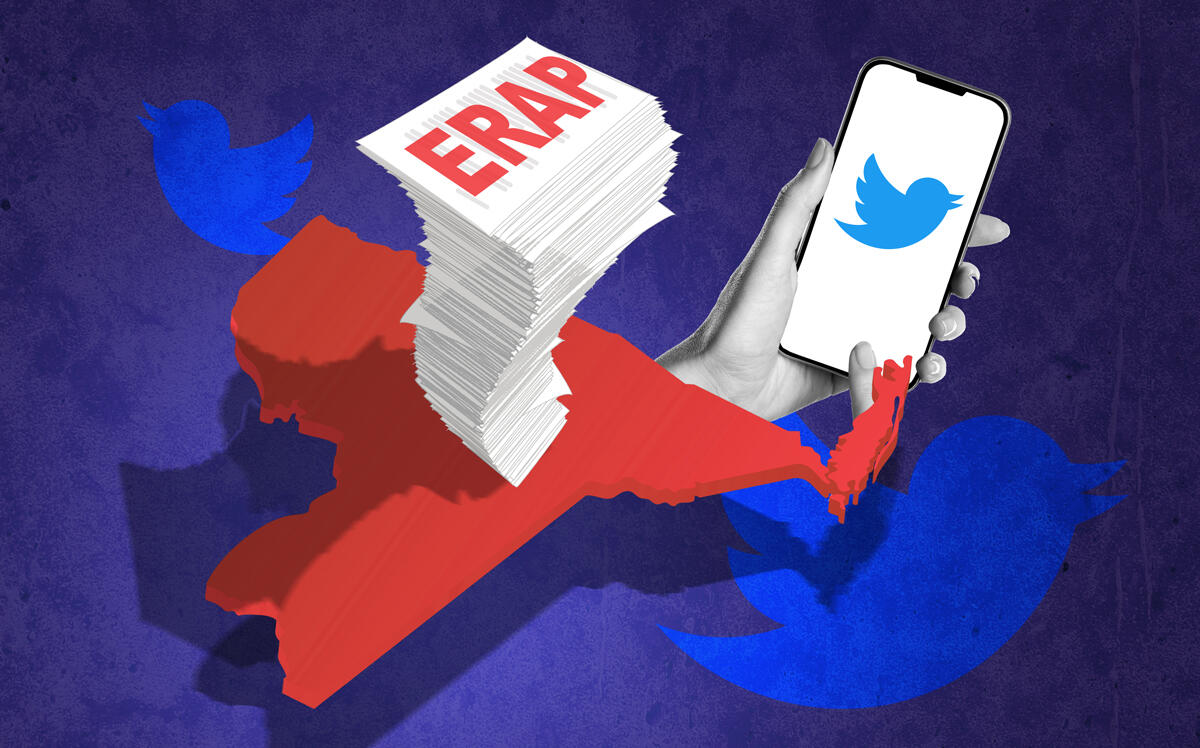 Another pittance: NY gets $119M for rent relief
Another pittance: NY gets $119M for rent relief
Trending
Landlords bitten by program intended to feed them
Aid has run dry, but nonpaying tenants remain shielded from eviction

When New York’s rent relief program launched early last summer, landlords saw a light at the end of the tunnel.
For owners June and Lance Margolin, it had been eight months since they’d received a payment from the tenant renting an apartment in their Long Island home.
The program, flush with $2.4 billion, promised to cover the tens of thousands of dollars their renter owed.
A year later, those hopes have turned to despair.
The couple claims their tenant’s application has sat in the “pending review” category for more than six months. Under the rules, a pending application protects a tenant from eviction even if the landlord never gets paid.
So tenants keep applying, even though the program’s funding ran dry in November and might not be adequately replenished to pay the claims. Landlords have had no choice but to house tenants who haven’t paid rent in months or even years.
Stymied by a state law that was supposed to save them, the Margolins created a survey to poll other landlords on their experience with the Emergency Rental Assistance Program.
They aim to gather enough anecdotes from landlords to motivate the legislature to do something. As of late June, 59 had submitted responses. But Albany’s next regular legislative session is not until January.
Doomed from the start
Some 340,347 ERAP applications had been filed as of June 28. The state has paid fewer than half of them, according to the Office of Temporary and Disability Assistance, the agency that runs the program.
Part of the problem is the program didn’t have enough money to begin with. When Congress passed a bill in late 2020 that included $25 billion in rental assistance — an amount it would later match with a second allotment — it based states’ shares on total population, rather than on their number of tenants.
New York, which has an extremely high percentage of tenants, was destined to be short-changed.
Last August, just two months after the portal opened, state Assembly member Linda Rosenthal told The Real Deal, “It’s probably not enough money.”
By November, Gov. Kathy Hochul shuttered the program, saying the $2.4 billion was exhausted, though only 60 percent of applicants had been approved.
But weeks later a judge ordered New York to reopen the portal, reasoning that the state’s eviction moratorium was set to expire Jan. 15 and the federal government would soon replenish the program with unspent funds from other states.
An interminable wait
Seven months later, that promise has largely gone unfulfilled. State figures show the amount allocated remains $2.4 billion.
Since the application portal reopened, governments have twice allocated funding. In mid-March, the U.S. Treasury Department said it would send New York another $119 million — a small fraction of the estimated $2 billion that landlords were still owed. (Hochul had asked for $1.6 billion.)
The next month, New York set aside around $800 million in the state budget for ERAP. But that money has yet to be made available. An OTDA spokesperson said the funds would be used to pay some of the existing applications in the coming weeks.
There is more federal funding that New York could tap. As of April, the Treasury reported that states had earmarked or distributed over $30 billion of the $46 billion pot, leaving around $15 billion to redistribute to states in need.
But no one knows how much New York will get, or when.
Federal rent relief dollars are split into two tranches. In March, the Treasury said it would soon release an application for the final round of reallocation of the first tranche of funds and that by the end of the month, would begin dispersing unspent money from the second.
But the first-round process is still underway, a Treasury official said Friday. An OTDA spokesperson said the agency had applied for more money from that tranche, but did not say how much. Given that Hochul got just 7 percent of what she requested last time, landlords have little reason for optimism.
The second-round process is moving just as slowly. The Treasury Department has yet to release a form for the state to apply for that funding.
Landlords in purgatory
With the fate of the portal’s total funding stream uncertain, the program is still accepting new applicants — and shielding those tenants from eviction.
A recent update from OTDA stated it will not be able to review the most recent applications, raising the possibility that tenants who don’t qualify will still be unevictable. An OTDA spokesperson said the agency screens applications for basic eligibility and flags those deemed ineligible.
As of June 24, the agency said it would review and process eligible applications submitted through March 31 of this year and would announce if it received any funding to pay those submitted after that date.
Since April 1, according to OTDA, 16,667 applications have been filed. Like earlier filers, those tenants will be able to stay in their homes indefinitely without paying rent.
Even landlords whose tenants applied before the March cut-off say they are unsure if those filings are being reviewed.
Holly Meyer, an upstate owner who leases an apartment in her single-family home, said her tenant applied for ERAP on March 7, after she’d filed an eviction action. The tenant, though employed and not in financial straits, had stopped paying rent two months earlier, after Meyer informed her she planned to sell the house and would not be renewing the lease.
The tenant has since moved to a new address in Poughkeepsie. Meyer said she had told her story to ERAP’s fraud department. The response, she said, was, “Oh, that does sound like fraud; we’re going to have to look into that.”
If the state decides to award her aid, it told her, it would be noted on the state’s website.
“I just have to check the portal like I do every day, as many times as possible,” Meyer said.
Frustration mounts
Landlords with applications that have sat since last summer say their tenants have continued to rack up debt, much of which the state will be unable to cover.
Jerry Waxenberg, a third-generation landlord with ownership interest in about 850 units, said one tenant in an eight-family building in Brooklyn last paid rent in March 2020. As of July 1, the tenant owed more than $35,000.
In late August 2021, Waxenberg said the tenant applied for relief, preventing the landlord from pursuing an eviction once the moratorium ended in January. Nearly a year later, Waxenberg said he has no sense of when he might hear an update.
“We keep checking with ERAP,” he said, “and the application is still pending.”
Even if the tenant is approved, the most the state will cover is 15 months of arrears. That would leave Waxenberg $15,600 short.
There is no ERAP equivalent for owners to pay their own costs, he noted.
“I would like to know where a landlord could file an ERAP application so we can pay our real estate taxes, water and sewer charges, utilities, heating expenses, etc.,” Waxenberg wrote in an email.
Read more
 Another pittance: NY gets $119M for rent relief
Another pittance: NY gets $119M for rent relief
 Landlords who got aid are illegally raising rents: AG
Landlords who got aid are illegally raising rents: AG
 State has 3 days to reopen rent relief portal: judge
State has 3 days to reopen rent relief portal: judge
His situation is not unique, a recent survey by landlord group the Community Housing Improvement Program shows. Owners of 84,000 apartments reported that 100,000 tenants in rent-stabilized buildings are more than two months behind on rent — after receiving ERAP funds.
Approximately 65,000 of those renters were more than a year behind.
“Allowing renters with massive arrears to continue to apply for ERAP, when there is no money available, is just selling them false hope,” said CHIP executive director Jay Martin. “Meanwhile, property owners are losing hundreds of millions of dollars in income.”
“Please share”
Landlords have taken to Twitter to vent their frustrations and call for reforms.
“Oh look, another month had passed, where ERAP is still undecided on countless applications for countless months,” Meyer tweeted on Friday. “Another month landlords have to pay for the squatters to live for free while landlords are suffering. When will this end?!”
Another owner, Kimberely Catalao, replied with a graphic that reads, “ERAP IS FRAUD.”
Her Twitter bio states that her tenant hasn’t paid rent in two years. “ERAP, politicians, no one is helping me,” it says. “GOD please help me.”
Others have called for OTDA to close the portal for good.
In February, OTDA appealed the decision that had forced the agency to reopen it, Law360 reported.
It was granted a stay that allows it to close the portal, but it decided to “continue to voluntarily comply with the terms of the interim order until such time that OTDA determines to invoke” the stay.
A spokesperson for the agency told The Real Deal that OTDA was unable to comment on whether it planned to stop fielding applications.
In the meantime, June Margolin has gotten somewhere with state lawmakers. Or one, at least.
In a June 23 Facebook post titled “PROGRESS!!!,” the landlord wrote that she had met with state Assembly member Steve Stern, who she claimed was the “one and only” state official to help her thus far.
Together, they created a list of suggestions to amend the program, including removing automatic eviction protection for applicants and fully funding ERAP.
But until the legislature reconvenes next year, it’s unlikely any sweeping reforms will be made. Hochul did call an emergency session last week, but only to act on gun control and abortion rights.
Still, Margolin ended the post with a call to action: “Our job is to get as many landlords as possible to take the survey so [Stern] can bring the other legislators the responses and landlord stories from their own districts,” she wrote. “Please share.”




